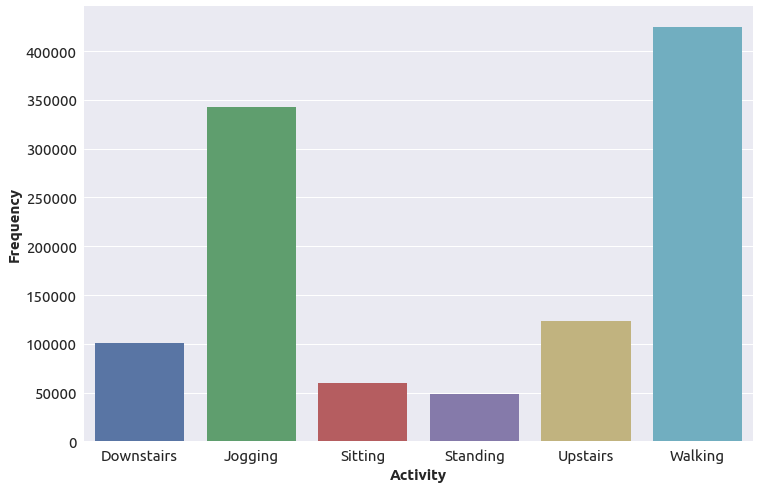This project is to create a small and simple Convolutional Neural Network for Human Activity Recognition using accelerometer sensor data for x, y and z axis.
The repository contains
HAR.py, containing the Keras network implementation of the CNN for Human Activity Recognition,actitracker_raw.txt, the dataset used for this experiment,model.h5, a pretrained model on the training data,evaluate_model.py, containing the evaluation script. This script evaluates the performance of the pretrained netowrk,testData.npy, containing the testing data used for the evaluation of the model,groundTruth.npy, containing the ground truth values for the testData outputs andREADME.md. The classification accuracy of the network is approximately 92%.
Python 3.6 is used during development and following libraries are required to run the code provided in the notebook:
- Keras 2.*
- Numpy
- Matplotlib
- Pandas
- sklearn
We will use Actitracker data set released by Wireless Sensor Data Mining (WISDM) lab.
The dataset we used for this project was released by Wireless Sensor Data Mining (WISDM) Lab and can be found on this [link].
The database has data for axis x,y and z for user to perform six different activities in controlled envoirnments. The activities include
- Downstairs,
- Jogging,
- Sitting,
- Standing,
- Upstairs and
- Walking.
The data is collected from 36 users using a smartphone in their pocket with the 20Hz sampling rate (20 samples per second). The dataset distribution with respect to activities (class labels) is shown in the figure below.
A network is created using the topology in HAR.py and trained on 80% of the data. To evaluate the performance of this network, we write a script "evaluate_model.py". This script uses the 20% of random samples in the dataset and tests the pretrained cnn model model.h5. This reports the percentage of the wrong predictions as error and creates a confusion matrix. The results shows that the network has an accuracy of 92.1 %. The confusion matrix is shown below
User identification from walking activity. Accelerometer dataset from 22 indivduals can be downloaded from the following [link]


